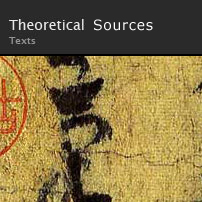

According to Paracelsus, "the sumum of theological and philosophical truths is contained in the religion of the two lights, the light of grace and the light of nature". We have wanted to follow the lessons of this Renaissance genius, and to order the principles, the grace or mystic and the nature or chemistry.
From two symbolic sets, that will be able to be extended and amplified to other significant fields of meaning, an effort has been made to create a base of theoretical references with respects to the traditional symbols. When choosing the fragments, we have looked for ways of providing an hermetic and symbolic basis without forgetting the texts of the western traditions as well as a text selection of other traditions, many of them proceeding from a summa of the universal wisdom elaborated by W. Perry (A Treasury of Traditional Wisdom). Because there is no way of understanding symbols without submerging oneself in the original sources of the tradition.
|
|
| |
 Selection of texts Selection of texts
|
| |
 Symbols of nature Symbols of nature
Chaos,
Elements,
Water,
Earth,
Air,
Fire,
Lion,
Eagle,
Mercury,
Sulphur,
Place,
Primary Matter,
Solve and coagula,
Salt,
Gold,
Stone.
|
 Symbols of grace Symbols of grace
|
God,
Love,
Creation,
Vision,
Purity,
Death,
Emptyness,
Benediction,
Prayer,
Faith,
Exile,
Redemption,
Wisdom,
Secret,
Revelation,
Word.
|

Oswald Croll, Basilica Chymica. Frontispiece. The Basilica Chymica by Oswald Croll (ca.1560-1608) is one of the most valuable and influential documents in the history of Paracelsianism. It was translated in almost all European languages. In this work, for the first time, the entire philosophy of Paracelsus was brought together in a understanding language. In its frontispiece are represented the two lights that, according to Paracelsus, are "the sumum of theological and philosophical truths"; the light of grace, Lumines gratia, that appears in the upper part of the gravure, and the light of nature, Lumines natura, in the lowest part.
|
|
|


